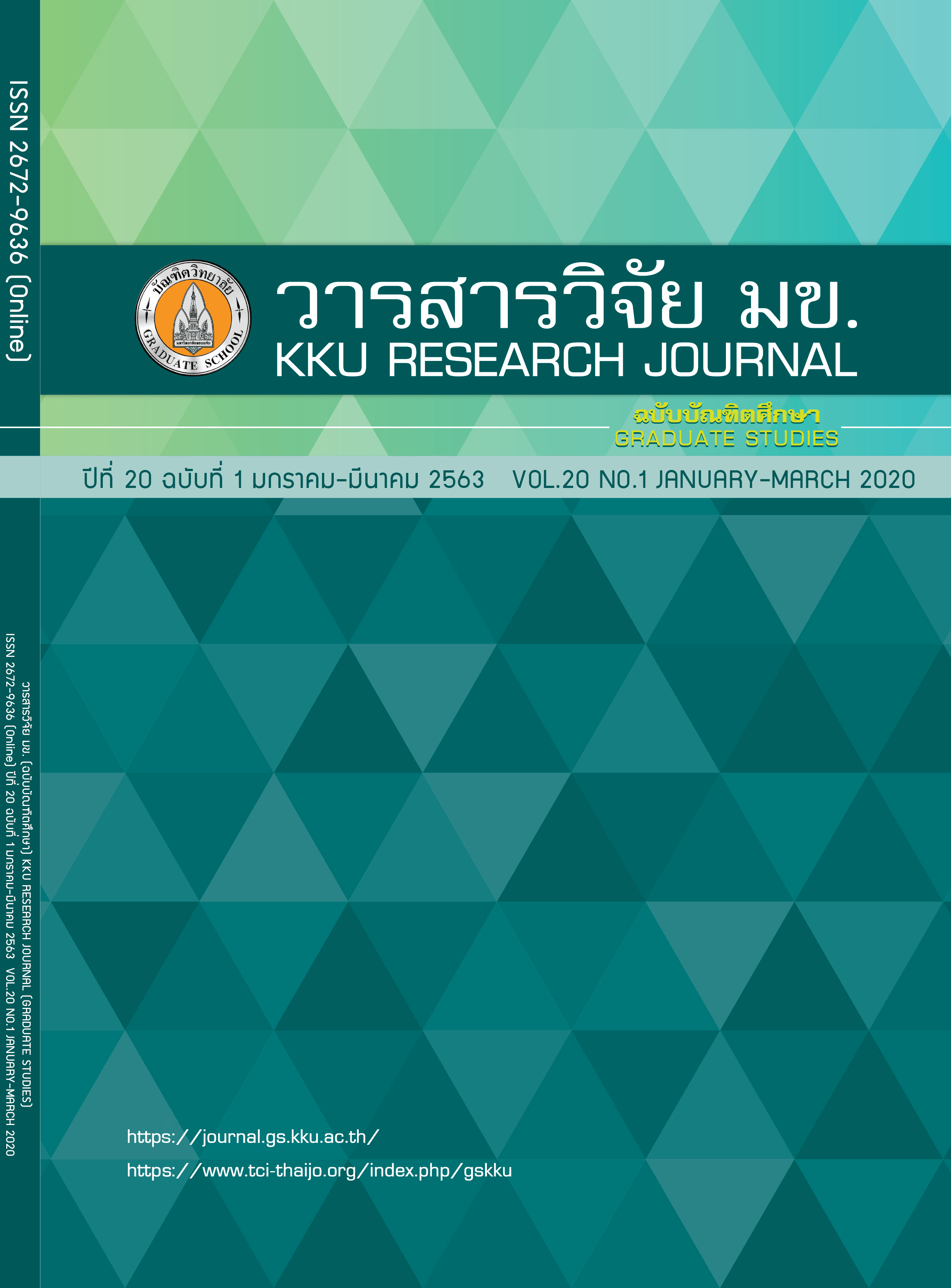Six-Week Progressive of Hip-Focused Exercises: An Alternative to Promote Dynamic Stability Following Anterior Cruciate Ligament Reconstruction
Keywords:
Anterior cruciate ligament reconstruction, Hip-focused exercises, Dynamic postural controlAbstract
Anterior Cruciate Ligament Reconstruction (ACLR) is a very successful method to restore mechanical stability of knee joint. However, significant instability can be found as a consequence of joint proprioception deficit and muscle weakness. The aim of the study was to determine the effects of progressive hip-focused exercises on dynamic postural control using the center of pressure (COP) variables. Recreationally active male who underwent ACLR were allocated into two groups (Exercise; n=13, control; n=10). The six-week progressive of hip-focused exercises were constantly performed on both legs, three times a week. A force platform was used to evaluate the changes in COP velocity after landing from a jump with the reconstructed leg. The subjective International Knee Documentation Committee (IKDC) was also used to evaluate the knee function. The results showed that, decreasing COP velocity has been detected for both mediolateral (ML) and anteroposterior (AP) direction (p<0.05). Participants in the exercise group has also showed greater changes for 36.38 and 42.73 percent from baseline of ML and AP direction, respectively. The IKDC score was also significantly increase (93.72±3.92; p<0.01) compared to the control. (77.92±9.19; p<0.01). Functional stability may have altered after returned to play following the ACLR. In order to attain the better performance, strengthen the hip muscles would benefit the dynamic stability in individuals with ACLR.
References
Winter DA, Patla AE, Frank JS. Assessment of balance control in humans. Med Prog Technol. 1990;16:31-51.
Golomer E, Dupui P, Bessou P. Spectral frequency analysis of dynamic balance in healthy and injured athletes. Arch Int Physiol Biochim Biophys. 1994;102:225-229.
Riann MP, Christopher DI, Marcus BS, Andrew K. Center-of-Pressure Parameters Used in the Assessment of Postural Control. 2002;11(1):51-66.
Nashner LM. Practical biomechanics and physiology of balance. Handbook of Balance Function Testing. 1993: 261-269.
Culvenor AG, Alexander BC, Clark RA, Collins NJ, Ageberg E, Morris HG, et al. Dynamic Single-Leg Postural Control Is Impaired Bilaterally Following Anterior Cruciate Ligament Reconstruction: Implications for Reinjury Risk. Journal of Orthopaedic & Sports Physical Therapy®. 2016;46(5):357-364.
Henriksson M, Ledin T, Good L. Postural control after anterior cruciate ligament reconstruction and functional rehabilitation. Am J Sports Med. 2001;29(3):359-366.
Moussa A. ZB, Zouita S, Dziri C, Ben Salah FZ. Single-leg assessment of postural stability and knee functional outcome two years after anterior cruciate ligament reconstruction. Annals of Physical and Rehabilitation Medicine. 2009;52:475–484.
Mohammadi F, Salavati M, Akhbari B, Mazaheri M, Khorrami M, Negahban H. Static and dynamic postural control in competitive athletes after anterior cruciate ligament reconstruction and controls. Knee Surg Sports Traumatol Arthrosc. 2012;20:1603–1610.
Paterno MV, Schmitt LC, Ford KR, Rauh MJ, Myer GD, Huang B, et al. Biomechanical measures during landing and postural stability predict second anterior cruciate ligament injury after anterior cruciate ligament reconstruction and return to sport. The American journal of sports medicine. 2010;38(10):1968-1978.
Paterno MV, Ford KR, Myer GD, Rachel H, Hewett TE. Limb Asymmetries in Landing and Jumping 2 Years following ACLR. Clin J Sport Med. 2007;17(4):258-262.
Khayambashi K, Ghoddosi N, Straub RK, Powers CM. Hip Muscle Strength Predicts Noncontact Anterior Cruciate Ligament Injury in Male and Female Athletes: A Prospective Study. Am J Sports Med. 2015;44 (2): 355-361.
Ford KR, Nguyen AD, Dischiavi SL, Hegedus EJ, Zuk EF, Taylor JB. An evidence-based review of hip-focused neuromuscular exercise interventions to address dynamic lower extremity valgus. Open access journal of sports medicine. 2015;6:291-303.
Kristen B, Cara C, Jennifer Le C, Lindsey P, Michael V, Kevin R. Electromyographic analysis of gluteus medius and gluteus maximus during rehabilitation exercises. The International Journal of Sports Physical Therapy. 2011;6(3):206-223.
Webster KA, Gribble PA. Time to Stabilization of Anterior Cruciate LigamentReconstructed Versus Healthy Knees in National Collegiate Athletic Association Division I Female Athletes. Journal of Athletic Training. 2010;45(6):580-585.
Pisit L, Teeranit P, Ekavit K, Chanin L, Teerawat K. Validity and Reliability of Thai Version of the International Knee Documentation Committee Subjective Knee Form. J Med Assoc Thai. 2008;91(8):1218-1225.
Paterno MV, Myer GD, Ford KR, Hewett TE. Neuromuscular training improves single-limb stability in young female athletes. J Orthop Sports Phys Ther. 2004;34:305-316.
Han F, Banerjee A, Shen L, Krishna L. Increased Compliance With Supervised Rehabilitation Improves Functional Outcome and Return to Sport After Anterior Cruciate Ligament Reconstruction in Recreational Athletes. The Orthopaedic Journal of Sports Medicine. 2015;3(12).
Garrison JC, Bothwell J, Cohen K, Conway J. Effects of hip strengthening on early outcomes following anterior cruciate ligament reconstruction. The International Journal of Sports Physical Therapy. 2014;9(2):157-167.



